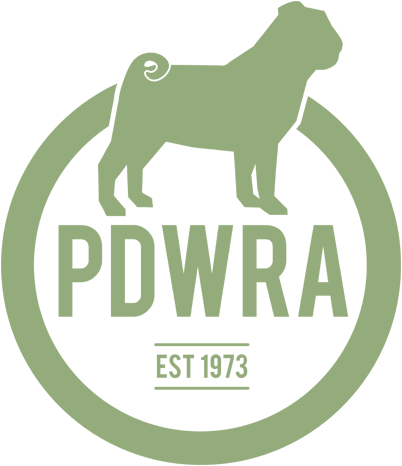Mast Cell Tumours.
By Helen McKee, PDWRA Vet Advisor.
No doubt a significant number of you (myself included!) will have had the misfortune to have had experience of a mast cell tumour (MCT) with one of your pugs.
Unfortunately, pugs are very prone to MCT’s, and since the tumour can take the guise of so many different lumps and bumps, it needs to be addressed promptly.
If you find a lump, either on the skin or under (sub-dermal), it is worth taking your pug to the vet and having it assessed. I would strongly advise that your vet does what is called a Fine Needle Aspirate (FNA), to either eliminate or confirm whether it is indeed a MCT.
Since their appearance can vary hugely, I would definitely recommend that a FNA is done straight away. Some vets are unaware as to how common these tumours are in pugs and may dismiss it as something else, but I would strongly advise that the vet take a sample. An FNA can be done with your pug awake at the time of the consultation; a needle is used to suck up tissue into it, which is then looked at under a microscope. If the lump is a MCT, granular cells can be seen clearly and are very distinctive of a mast cell tumour.
If the FNA reveals that the mass is a MCT, then it will need to be removed with a good margin (depending on its position on the body). Your vet will also recommend histopathology; this will give a guide as to how aggressive the tumour is, which ranges from one (low grade) to three (high grade).
The tumour grade will also indicate the likelihood of both local and peripheral (metastasise around the body) spread.
Confusingly sub-dermal tumours have a different grading system (Kuipel) and can be more difficult to predict their grade; further tests can be done to get a better idea but are only worth carrying out if you intend to follow through with more intensive treatment such as chemotherapy (if indicated).
Normally, if a tumour is grade one or two, then no other treatment is needed other than removal (excision) with a good margin. However, new MCT’s can arise elsewhere on the pug’s body once they have had one.
If the tumour is classed as Grade 3, it means it is cancer that can potentially spread around the body. Chemotherapy can be used for dogs with Grade 3 MCT’s but has mixed results and can in themselves make your pug ill, so needs careful consideration. It also involves expensive tests to ascertain spread, such as CT scans, which may also need to be taken into account.
The other treatment you may be offered (and is still in its early stages of use) is a drug called Stelfonta. Its use is specifically for mast cell tumours that cannot be removed with a good margin because of their position (eg. lower limb). Before its use (it is injected directly into the tumour), scans of the body and samples of certain organs are undertaken to ensure the tumour hasn’t spread round the body. The drug can cause extreme pain and the treatment can occasionally be fatal, so if you are offered this, ensure you ask as many questions as possible so that you can make an informed decision. I personally would not put my dog through it.
So, in summary, by far the best way of dealing with MCTs is to catch them early and remove them with as good a margin as is possible.
Helen (MRCVS)
For further items on pug health, please go to: Pug Health & Wellbeing | The Pug Dog Welfare & Rescue Association (pugwelfare-rescue.org.uk)


